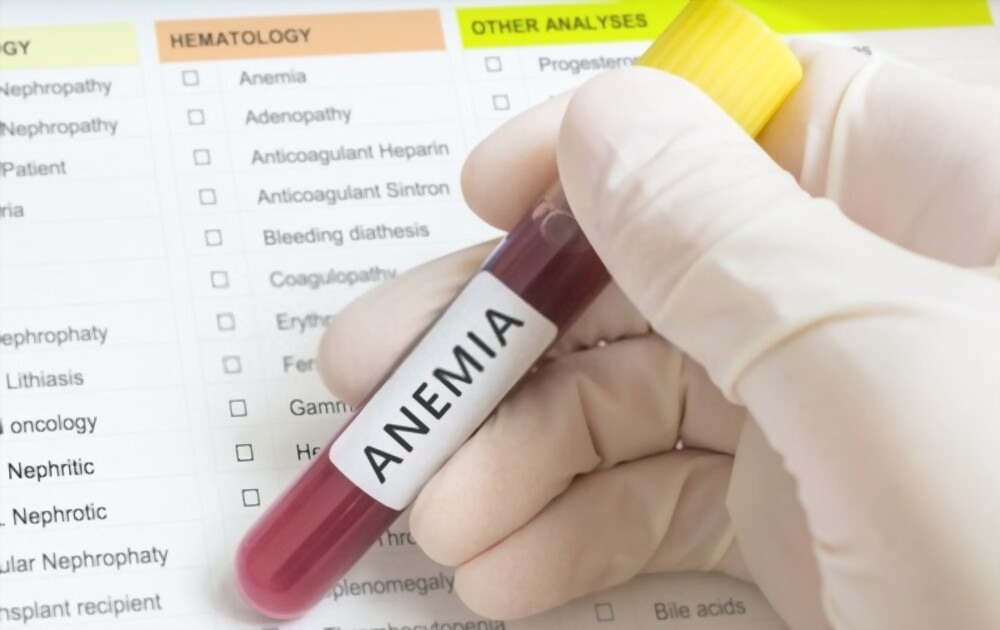What are Red Blood Cells (RBC)?
These are the only cells capable of transporting oxygen to each and every cell of our body. The transport of oxygen requires a very special protein, namely Hemoglobin. Hemoglobin is the reason why these cells appear red.

What is Anemia?
It is referred to as having a low number of RBC or a low hemoglobin count. This basically means that your tissues and/or organs are not able to receive enough oxygen. Oxygen is the main component required for metabolism, lack of which causes sickness.
Types
There are hundreds of different types, broadly divided into 3 groups-
- By blood loss
- Because of less number of RBC/decreased RBC production
- By destruction of RBC
Gastrointestinal conditions – ulcers, inflammation, etc.
Non-steroidal medicines – aspirin
Female menses
After surgery
2. By decreased RBC production-
Bone marrow problems: aplastic anemia, lead poisoning, thalassemia
Iron deficiency
Vitamin B12 deficiency: megaloblastic anemia, dietary deficiencies, pernicious anemia
3. By RBC destruction
Hemolytic anemia- autoimmune diseases, enlarged spleen. toxins
The most common type of anemia is Iron Deficiency Anemia.
Iron Deficiency Anemia
Lack of enough mineral iron in the body causes Iron deficiency anemia.
Hemoglobin is made in the bone marrow. Bone marrow specifically requires iron for the production of Hemoglobin, the oxygen transport protein.
This type of anemia is mainly caused by-
- Diet lacking iron, especially in vegeterians
- Frequent blood donations
- Blood loss
- Lack of iron absorption
- Pregnancy
- Female menses
- Digestive problems etc.
Complications-
- If left untreated, this type can cause severe problems
- Cardiac (heart) problems- heart rate increases to try to supply more oxygen to the cells.
- Pregnancy issues – causes premature births, low weight babies
- Growth problems in infants – delayed growth and development. The infant becomes more vulnerable to diseases.
Food rich in iron-
- Green leafy vegetables
- Dry fruits – raisins, apricots
- Peas
- Beans
- Carrots
- Beetroots
- Red meat
- Seafood
Vitamin Deficiency Anemia
Lesser than adequate amounts of vitamins such as Vitamin C, Vitamin B12, folate(B9) leading to this type of anemia.
Causes of this anemia include-
- Excessive consumption of alcohol
- Smoking
- Anti-seizure medications
- Small intestinal diseases
- Abnormal bacterial growth in small intestine
Food rich in Vitamins-
- Green leafy vegetables (folate)
- Nuts (folate)
- Grains (folate)
- Fruits and juices (folate)
- Eggs (B12)
- Dairy products (B12)
- Broccoli (C)
- Citrus fruits like oranges (C)
- Strawberries (C)
- Tomatoes (C)
Aplastic Anemia
When your bone marrow is unable to make or produce new red blood cells, the condition is known as aplastic anemia.
This type of Anemia is inheritable.
Treatment-
- Antibiotics
- Hormonal drugs
- Blood transfusion
- Bone marrow transplant
- Stem cell transplant
Megaloblastic Anemia
In this anemia, the size of red blood cells increases which there is a decrease in their number. This is majorly caused by a deficiency of Vitamin B12.
Pernicious anemia – This is a type of megaloblastic anemia where the body is not able to absorb vitamin B12. Absorption of vitamin B12 requires a special substance called intrinsic factor. Lack of this intrinsic factor leads to pernicious anemia.
Hemolytic Anemia
Here, The rate of destruction of red blood cells is more than the rate of their formation.
Causes-
- Inherited
- Viral infections
- Bacterial infections
- Blood cancers
- Autoimmune diseases
- Hypersplenism
- Heart valve problems
- Blood transfusion reactions
Treatment-
- Corticosteroid medications
- Immunoglobulin supplements
- Spleen removal surgery
- Immunosuppressive therapy
Symptoms
- Major symptom is fatigue (tiredness). The person lacks stamina. He/she is not able to perform activities better than what they used to earlier.
- Dizziness is another symptom. Person feels like they are about to get unconscious.
- Person also experiences shortness of breath, like after climbing up stairs, walking a few miles, even talking more.
- Skin becomes pale. Extremities are cold. Heartbeat is unusual.
- Chest pain

Diagnostic Tests

- CBC – Complete Blood Count
- Test to determine size and shape of your red blood cells
Normal Ranges
RBC-
- Male – 4.7 to 6.1 million cells per cubic mm of blood
- Female – 4.2 to 5.4 million cells per cubic mm of blood
- Biconcave disc shaped
Iron levels-
- Male – 38.3 to 48.6%
- Female – 35.5 to 44.9%
Hemoglobin levels-
- Male – 14 to 17 gm/dL
- Female – 12 to 15 gm/dL
Oxygen-
75 to 100 mm Hg
Treatment
- Iron supplements
- Vitamin C pills
- Spinach, carrot, beetroot
- Dairy products
- Citrus fruits like orange
- Folic acid supplements
Prevention
Diet is the major source of every requirement for the good production of red blood cells in the body. Iron and vitamins not only cause anemia but also a lot many other conditions. Having a well-balanced diet can literally save you from n number of conditions!
Also, referring a doctor before it becomes way too severe is always the better choice.
Anemia and your Heart
Since the number of red blood cells reduces, the transport of oxygen to the body reduces. Therefore, the heart has to pump more blood so as to fulfill the body’s oxygen needs. This leads to an increase in the pumping of the heart (heart rate). This further leads to heart problems like heart failure. Observation shows that around 48% of people having heart failure are anemic. An anemic person having a heart attack is at severe risk than a normal person.
Also Read : Some Amazing Home Remedies for a Dry Cough – V Cure (vcurehealthcare.com)

